Immortal Freedom Fighter Madan lal Dhingra Ji

इतिहास में आज का दिन
क्रांतिकारी हिंदू योद्धा मदन लाल ढिंगरा
के जीवन का संपूर्ण परिचय हिन्दी भाषा और अंग्रेज़ी में
18 सितंबर
जयंती –
ब्रिटिश अधिकारी कर्जन वायली का वध कर स्वाधीनता यज्ञ में आहुति देने वाले अप्रतिम क्रान्तिवीर मदन लाल ढींगरा
_”साँस बनी है आँधी सी,_ _तूफान उठा है सीने में।_ _जब तक गुलाम है देश मेरा,_ _मौज कहाँ है जीने में।।”_ _ये शब्द हैं विदेश में जा कर्जन वायली का वध कर खुदीराम बोस की फाँसी का प्रतिशोध लेने वाले मदनलाल ढींगरा जी के, वो महावीर जिनको पुस्तको में नहीं मिला यथोचित सम्मान; क्योंकि पुस्तकें लिखने वाले थे वामपंथी, नेहरू-गांधीवादी। वीर मदनलाल धींगरा जी… ये नाम भारतमाता के उस वीर बेटे का है, जो शौर्य व पराक्रम का दूसरा नाम था तथा जिसने भारतमाता को ब्रिटिश गुलामी की जंजीरों से मुक्त कराने के लिए अपना बलिदान दे दिया था। मदनलाल ढींगरा चाहते, तो वह भी स्वाधीनता आन्दोलन में चरखा चला सकते थे, किन्तु वह जानते थे कि यदि चरखे से ही आजादी मिलती, तो इतने समय तक ब्रिटिश भारत को गुलाम बनाकर रख ही नहीं पाते, 1857 की क्रान्ति होती ही नहीं। अतः उन्होंने चरखा चलाने के बजाय उस रास्ते को चुना, जिस रास्ते पर मंगल पाण्डेय, नाना साहब, तात्या टोपे, झाँसी की रानी लक्ष्मीबाई चलीं थीं।
आइये जानते हैं ऐसे वीर के विषय में_
आरम्भिक जीवन—
मदनलाल ढींगरा का जन्म 18 सितम्बर सन् 1883 को पंजाब प्रान्त के एक सम्पन्न हिन्दू परिवार में हुआ था। उनके पिता डॉ॰ दित्तामल ढींगरा जी सिविल सर्जन थे व अंग्रेजी रंग में पूरी तरह रंगे हुए थे, किन्तु माताजी अत्यन्त धार्मिक एवं भारतीय संस्कारों से परिपूर्ण महिला थीं।
इतिहास में आज का दिन
कॉलेज में राष्ट्रवाद की भावना—
मदनलाल आठ भाई-बहन थे। सभी भाइयों की शिक्षा देश के बाहर हुई थी। देश से बाहर शिक्षा प्राप्त करने से पूर्व मदनलाल ने अमृतसर के एमबी इण्टरमीडिएट कॉलेज और उसके बाद लाहौर के गर्वनमेंट कॉलेज यूनिवर्सिटी में पढ़ाई की थी, जहाँ वे राष्ट्रवादी आन्दोलन से प्रभावित हुए, जो उस समय होम रूल की माँग कर रहा था।
अंग्रेजों के विरोध का आरम्भ—
ढींगरा ने पाया कि देश में औपनिवेशिक सरकार की औद्योगिक और वित्तीय नीतियों को इस तरह से तैयार किया गया है, जिससे स्थानीय उद्योगों का दमन हो सके और ब्रिटिश आयात को लाभ मिल सके। उन्होंने पाया कि भारत के विकास की कमी का सबसे बड़ा कारण भी यही है। साल 1904 में ढींगरा ने एमए की पढ़ाई के समय प्रिंसिपल द्वारा दिये आदेश (छात्रों को ब्रिटेन से आयातित कपड़े का ब्लेजर पहनने का आदेश) के विरुद्ध छात्रों का नेतृत्व किया। इसके लिए उन्हें कॉलेज से निकाल दिया गया था।
गुलामी की मानसिकता वाले पिता से क्रांतिवीर का अलगाव—
ढींगरा के पिता एक सरकारी पद पर थे व उनका परिवार अंग्रेजों का विश्वासपात्र था। जिस कारण उनके पिता इस प्रकार के विरोध के समर्थक नहीं थे। उन्होंने मदनलाल से क्षमा माँगने को कहा, जिससे उन्हें कॉलेज में पुनः प्रवेश मिल सके, परन्तु मदनलाल ने ऐसा करने से स्पष्ट मना कर दिया। यहाँ तक कि वे इस विषय में पिता से चर्चा करने घर तक नहीं लौटे और अपने अनुसार ही जीवन जीने के लिए शिमला के पास कालका में क्लर्क की नौकरी करने लगे।
जीवन संघर्ष व इंग्लैण्ड गमन—
उन्हें अपने स्वाभिमान व देश-प्रेम की रक्षा हेतु क्लर्क की नौकरी के उपरान्त तांगा-चालक के रूप में और अन्त में एक कारखाने में श्रमिक के रूप में काम करना पड़ा। कारखाने में श्रमिकों की दशा सुधारने हेतु उन्होंने यूनियन (संघ) बनाने का प्रयास किया, किन्तु वहाँ से भी उन्हें निकाल दिया गया। कुछ दिन उन्होंने मुम्बई में छोटे-मोटे काम किये। तत्पश्चात अपने बड़े भाई डॉ॰ बिहारी लाल के परामर्श पर सन् 1906 में उच्च शिक्षा प्राप्त करने इंग्लैण्ड चले गये, जहाँ उन्होंने यूनिवर्सिटी कालेज लन्दन में यान्त्रिकी-अभियान्त्रिकी में प्रवेश ले लिया। विदेश में रहकर अध्ययन करने के लिये उन्हें उनके बड़े भाई ने तो सहायता दी ही साथ-ही इंग्लैण्ड में रह रहे कुछ राष्ट्रवादी कार्यकर्ताओं से भी आर्थिक सहायता मिली।
लन्दन में क्रान्तिकारियों का साथ वीर सावरकर से निर्णायक भेंट—
लन्दन में ही ढींगरा भारत के प्रख्यात राष्ट्रवादी विनायक दामोदर सावरकर एवं श्यामजी कृष्ण वर्मा के संपर्क में आए। वे लोग ढींगरा की ऐसी प्रचण्ड देशभक्ति से बहुत प्रभावित हुए। ऐसा विश्वास किया जाता है कि सावरकर ने ही मदनलाल को “अभिनव भारत” नामक क्रान्तिकारी संस्था का सदस्य बनाया और हथियार चलाने का प्रशिक्षण दिया।
अपने क्रान्तिकारी बन्धु की फाँसी के प्रतिशोध का निश्चय—
मदनलाल ढींगरा ‘ इण्डिया हाउस ‘ में रहते थे, जो उन दिनों भारतीय विद्यार्थियों के राजनैतिक क्रियाकलापों का केन्द्र हुआ करता था। ये लोग उस समय खुदीराम बोस और उनके कई क्रान्तिकारियों को अंग्रेजों द्वारा फाँसी लगाये जाने से बहुत क्रोधित थे। जिसका प्रतिशोध लेने का वह चिन्तन करते रहते थे। शीघ्र ही वह घड़ी आ गई जब हमारे इस क्रान्तिवीर को अपने आदर्श खुदीराम बोस जी की फाँसी का प्रतिशोध लेने का अवसर मिल गया।
कर्जन वायली का वध कर युवा क्रान्तिकारी खुदीराम बोस की फाँसी का प्रतिशोध—
1 जुलाई सन् 1909 की शाम को इण्डियन नेशनल ऐसोसिएशन के वार्षिकोत्सव में भाग लेने के लिये भारी संख्या में भारतीय और अंग्रेज एकत्र हुए। जैसे ही भारत सचिव का राजनीतिक सलाहकार सर विलियम हट कर्जन वायली अपनी पत्नी के साथ हाॅल में आया, ढींगरा ने उनके चेहरे पर पाँच गोलियाँ दागी; इसमें से चार सही निशाने पर लगीं। उसके बाद ढींगरा ने अपनी पिस्तौल से स्वयं को भी गोली मारनी चाही; किन्तु उन्हें पकड़ लिया गया।
इतिहास में आज का दिन
हिंदू योद्धा
हत्या अभियोग एवं मृत्युदण्ड—
ढींगरा पर हत्या का अभियोग चलाया गया। उन्होंने स्वयं की पैरवी की और अदालत की वैधता को ही मानने से इनकार कर दिया। अदालत ने उनको मृत्युदण्ड दिया। मदन लाल ढींगरा ने अदालत में खुले शब्दों में कहा कि *_”मुझे गर्व है कि मैं अपना जीवन समर्पित कर रहा हूँ।”_* अदालत में दिए गए उनके इस बयान ने न केवल भारत के; अपितु आयरिश स्वतन्त्रता आन्दोलन के लोगों को भी प्रेरित किया। 17 अगस्त, 1909 को लन्दन के पेंटविले जेल में उन्हें फाँसी पर लटका दिया गया और मदनलाल ढींगरा अमर हो गए।
राष्ट्रभक्तों को प्रेरणा देता क्रांतिवीर का स्मारक—
देश-भक्ति, देश-प्रेम व देश की स्वतन्त्रता हेतु अपना सर्वस्व न्योछावर करने वाले ऐसे अमर स्वातन्त्र्य वीर मदनलाल ढींगरा जी को श्रद्धाञ्जलि देने हेतु एवं सदैव इनका स्मरण करने हेतु अजमेर रेलवे स्टेशन के ठीक सामने इनका स्मारक बनाया गया है।
माना कि क्रूर अंग्रेजों ने उनकी जीवन लीला समाप्त कर दी थी, किन्तु माँ भारती के इस वीरपुत्र की यशलीला तो आज इतने वर्षों बाद भी उतने ही शिखर पर है, जितनी उनके बलिदान के समय थी। देश के बलिदानी कभी भी मरते नहीं है, उनकी लौकिक मृत्यु में ही उनका यश रूपी जीवन छिपा होता है। आइए गांधी-नेहरू के गुणगान में छिपाए जाते इस बलिदानी क्रान्तिकारी के जीवन को स्मरण करें व करवाएँ एवं उनके प्रति अपनी श्रद्धांजलि, अपनी कृतज्ञता व्यक्त करें
Today’s day in history today in history 18
September 18 September birth anniversary – Madan Lal Dhingra, the incomparable revolutionary who sacrificed his life for freedom by killing British officer Curzon Wylie.
_”The breath has become like a storm,_ _A storm has risen in the chest._ _As long as my country is a slave,_ _Where is the fun in living.”_ _These words are the revenge of Khudiram Bose’s hanging by killing Curzon Wylie in a foreign country. Taker Madanlal Dhingra ji, that Mahavir who did not get due respect in books; Because the people writing the books were leftists, Nehru-Gandhians. Veer Madanlal Dhingra ji… This is the name of that brave son of Mother India, who was another name for bravery and bravery and who sacrificed his life to free Mother India from the chains of British slavery. If Madanlal Dhingra wanted, he could have also used the charkha in the freedom movement, but he knew that if independence had been achieved only through the charkha, then the British would not have been able to keep India as a slave for so long, the revolution of 1857 would not have happened. Therefore, instead of spinning the charkha, he chose the path on which Mangal Pandey, Nana Saheb, Tatya Tope and Rani Lakshmibai of Jhansi had walked. Let us know about such a brave person. Early life- Madanlal Dhingra was born on 18 September 1883 in a prosperous Hindu family of Punjab province. His father Dr. Dittamal Dhingra ji was a civil surgeon and was completely colored in English, but mother was a very religious woman and full of Indian values. Today’s day in history
The spirit of nationalism in college—
Madanlal had eight brothers and sisters. All the brothers were educated outside the country. Before pursuing education outside the country, Madanlal studied at MB Intermediate College, Amritsar and then at Government College University, Lahore, where he was influenced by the nationalist movement which was demanding Home Rule at that time. Beginning of opposition to the British- Dhingra found that the industrial and financial policies of the colonial government in the country were designed in such a way as to suppress local industries and benefit British imports. He found that this is also the biggest reason for India’s lack of development. In the year 1904, Dhingra led the students against the order given by the principal during his MA studies (ordering the students to wear blazers made of cloth imported from Britain). For this he was expelled from the college.
Krantiveer’s separation from his slave-minded father—
Dhingra’s father held a government post and his family was trusted by the British. Due to which his father was not a supporter of this type of protest. He asked Madanlal to apologize so that he could get re-admission to the college, but Madanlal clearly refused to do so. He did not even return home to discuss this matter with his father and to live his life as per his wish, he started working as a clerk in Kalka near Shimla.
Life struggle and going to England-
To protect his self-respect and patriotism, after working as a clerk, he had to work as a cart driver and finally as a laborer in a factory. He tried to form a union to improve the condition of workers in the factory, but he was expelled from there too. For some days he did small jobs in Mumbai. Thereafter, on the advice of his elder brother Dr. Bihari Lal, he went to England in 1906 to pursue higher education, where he took admission in Mechanical Engineering at University College, London. To study abroad, he was helped not only by his elder brother but also received financial help from some nationalist activists living in England.
Decisive meeting with Veer Savarkar along with revolutionaries in London-
It was in London itself that Dhingra came in contact with India’s famous nationalists Vinayak Damodar Savarkar and Shyamji Krishna Verma. They were greatly impressed by Dhingra’s fierce patriotism. It is believed that Savarkar made Madanlal a member of the revolutionary organization called “Abhinav Bharat” and gave him training in using weapons. Determined to avenge the hanging of his revolutionary brother – Madanlal Dhingra lived in ‘India House’, which used to be the center of political activities of Indian students in those days. At that time, these people were very angry with the hanging of Khudiram Bose and many of his revolutionaries by the British. He kept thinking about taking revenge. Soon the time came when our revolutionary got the opportunity to avenge the hanging of his idol Khudiram Bose ji. Revenge for the hanging of young revolutionary Khudiram Bose by killing Curzon Wylie—
On the evening of 1 July 1909, a large number of Indians and British gathered to participate in the annual function of the Indian National Association. As Sir William Hutt Curzon Wylie, political advisor to the Secretary of State for India, entered the hall with his wife, Dhingra fired five bullets at his face; Of these, four hit the right target. After that Dhingra tried to shoot himself with his pistol; But he was caught.
Murder charges and death penalty-
Dhingra was charged with murder. He represented himself and refused to accept the legitimacy of the court. The court gave him death sentence.
Madan Lal Dhingra openly said in the court that
_”I am proud that I am dedicating my life.”_* This statement given by him in the court not only made India proud; But also inspired the people of the Irish independence movement.
On August 17, 1909, he was hanged in Paintville Jail, London and Madanlal Dhingra became immortal.
Krantiveer’s memorial inspiring the patriots –
To pay tribute to the immortal freedom fighter Madanlal Dhingra ji, who sacrificed everything for his patriotism, patriotism and freedom of the country, and to always remember him, a memorial has been built right in front of Ajmer Railway Station. It is true that the cruel British had ended his life, but even after so many years, the fame of this brave son of Mother India is at the same peak as it was at the time of his sacrifice. The martyrs of the country never die, their life of fame is hidden in their worldly death. Let us remember the life of this sacrificial revolutionary which is being hidden in the praises of Gandhi-Nehru and let us pay our tribute and express our gratitude to him.
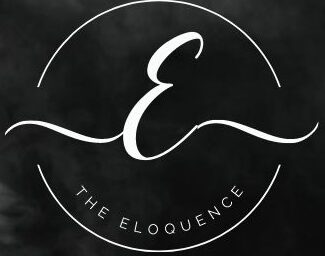
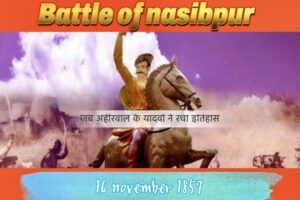
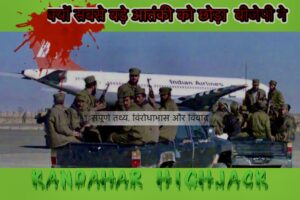
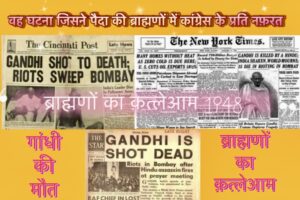

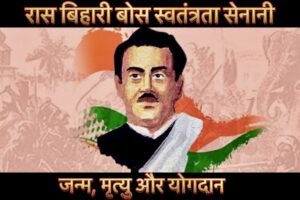
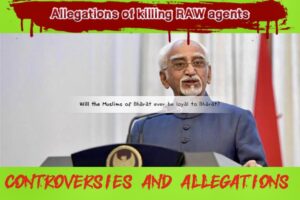
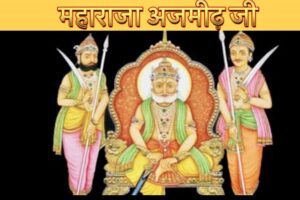
Your article helped me a lot, is there any more related content? Thanks!
Thankyou . Yes see our other articles, hope u also like them